Community-led Disaster Resilient Infrastructure for Loktak Ecosystem
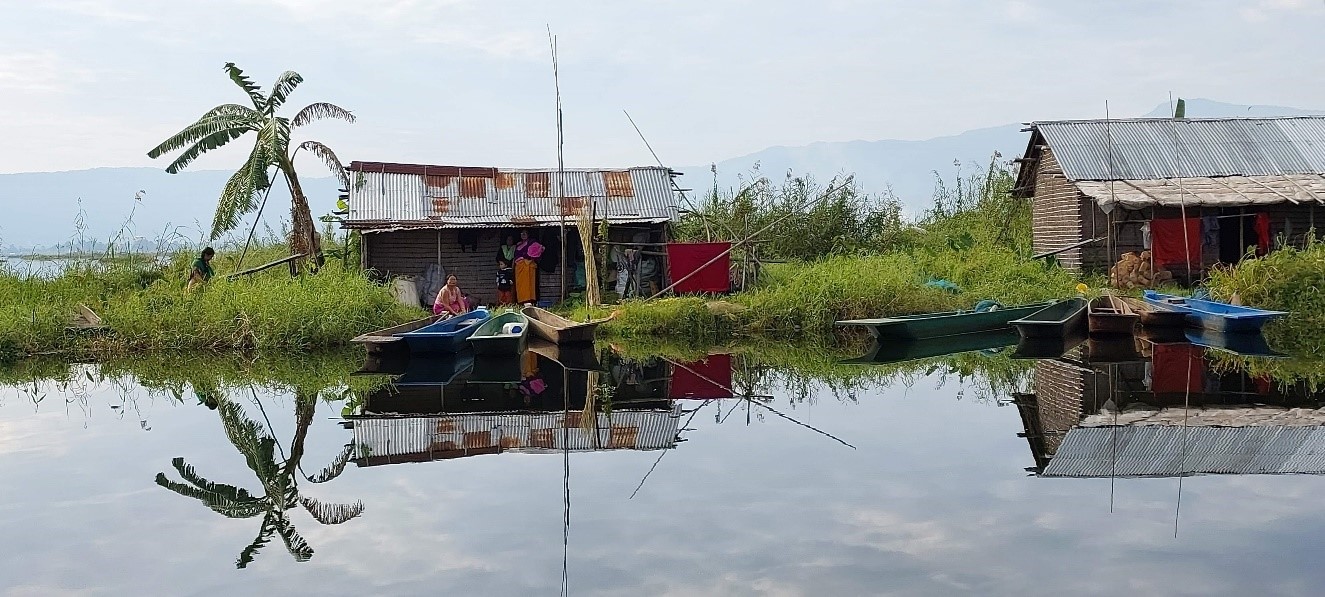
In the heart of Manipur, India, lies an exceptional ecosystem that seems to float on water. The Loktak Wetland, with its distinctive “phumdis” defined as thick floating vegetation or biomass - is not just a marvel of nature, but also a lifeline for countless species of flora-fauna and local communities. As a designated Ramsar site, Loktak Wetland's global importance is well-recognised. However, this fragile paradise faces numerous challenges that threaten its delicate ecological equilibrium.
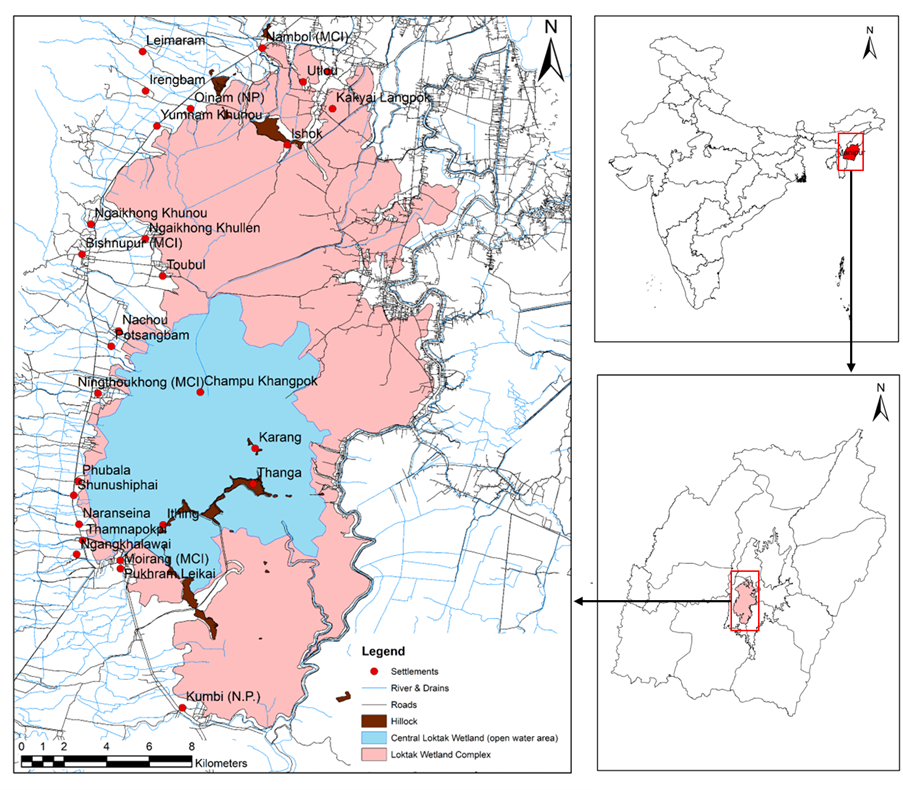
Location of Loktak Wetland, Manipur, India (Source: Author)
The Loktak Challenge
Loktak Wetland is grappling with socio-ecological vulnerabilities caused by both natural and manmade disasters. The wetland ecosystem is facing regular threats like water pollution, the spread of biomass, thunderstorms and flooding. These issues not only endanger the rich biodiversity of the region but also jeopardise the livelihoods of indigenous communities who have coexisted with this ecosystem for generations.
Our research embarked on developing a resilient planning framework for this fragile socio-ecological system. Our study employed a comprehensive methodology for resilient Infrastructure planning, which included:
1) People-centric nature-based approach.
2) Spatial mapping and participatory assessment of vulnerabilities.
3) Evidence-based formulation of resilient framework
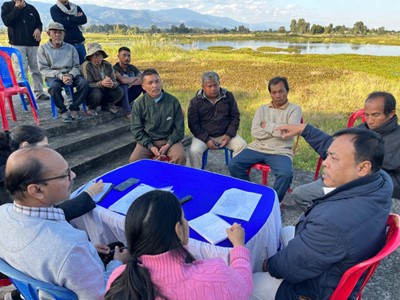
Discussions with the local community – “Stakeholders of the Loktak Wetland”
The drivers, Pressures, State, Impact, Response (DPSIR) framework is adopted to assess vulnerabilities at the village level and further, stakeholder surveys helped to identify the needs of the local community. Spatial analysis for vulnerability risk mapping was done to create a spatial zonation map of. Assessment of vulnerabilities and participatory mapping unveiled a complex web of challenges:
- Impacts of natural and manmade hazards on the wetland ecosystem
- Livelihood vulnerabilities of local communities
- Social and cultural challenges faced by Indigenous groups
- Significant infrastructure gaps (Physical and social)
- Lack of resources for enforcement of regulations
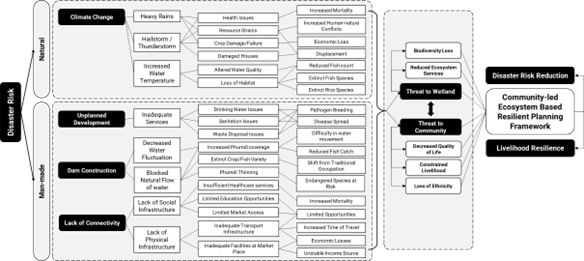
Disaster Risks for Loktak Wetland and Resilient Planning Framework (Source: Author)
To address the above challenges, stakeholder consultation and empirical analysis were conducted to develop a “Community-led Resilient Planning Framework (CLPF)” for achieving both Livelihood Resilience and Disaster Risk Reduction in the Loktak ecosystem. The CLPF primarily includes the following components of Resilient Infrastructure for disaster risk reduction:
- Mobile Infrastructure at the fragile ecosystem
- Suspension Bridge to facilitate accessibility to the mainland, preserving wetland ecology
- Community-led Livelihood opportunities boosting ecotourism
- Disaster preparedness
The infrastructure suggested will primarily focus on enhancing connectivity without impacting the fragile ecology of the Loktak. In a region vulnerable to multiple manmade and natural hazards, preparation is key. Disaster control station at the Island to regularly monitor, control and provide emergency infrastructure. a network of early warning systems, run by the community itself. Mobile Social Infrastructure will improve healthcare by bringing clinics right to the doorstep of remote communities. Additionally, Improving the traditional mode of access, assisted with state-of-the-art technology will aid robustness.
As these aren't just amenities – they're lifelines that can dramatically improve the quality of life for Loktak dwellers.
Planning for Disaster Risk Reduction
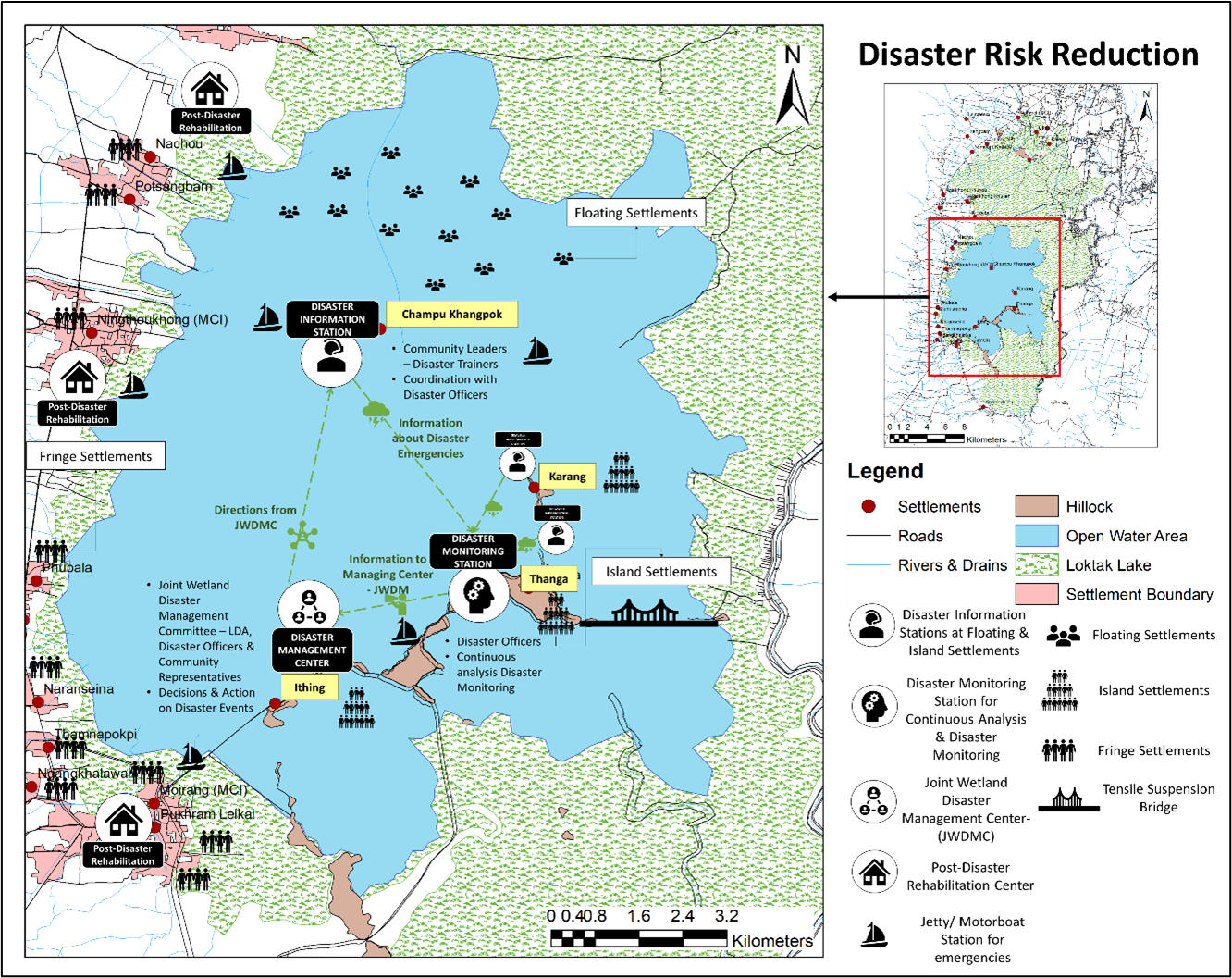
Disaster Risk Reduction - Activity Mapping (Source: Author)
Resilience through Community - Boosting Livelihoods While preserving local ecology
Declaring it a UNESCO World Heritage Site - The promotion of Loktak as a World Heritage Site will promote local community wisdom, protect their ethnicity, preserve unique biodiversity, strengthen livelihood resilience and enable Disaster Risk Reduction.
Empowering Local Community as Loktak Guardians - The symbiotic relationship between the communities and the unique ecosystem of Loktak is to be strengthened through empowering local communities to protect their wetland as their community asset
Ecotourism - Imagine waking up to the gentle lapping of water against your floating home.
That's the experience we hope to offer visitors through the proposed – “Community-led ecotourism model” promoting “Sahabhagita” i.e. people’s participation. By developing homestays in floating and island settlements, we're not just proposing to create unforgettable experiences for tourists – we're opening up new income streams for local communities while ensuring the “Wise use” of wetlands. Such as community-run cafes serving up exquisite regional dishes, or local guides imparting tales of Loktak's mysteries.
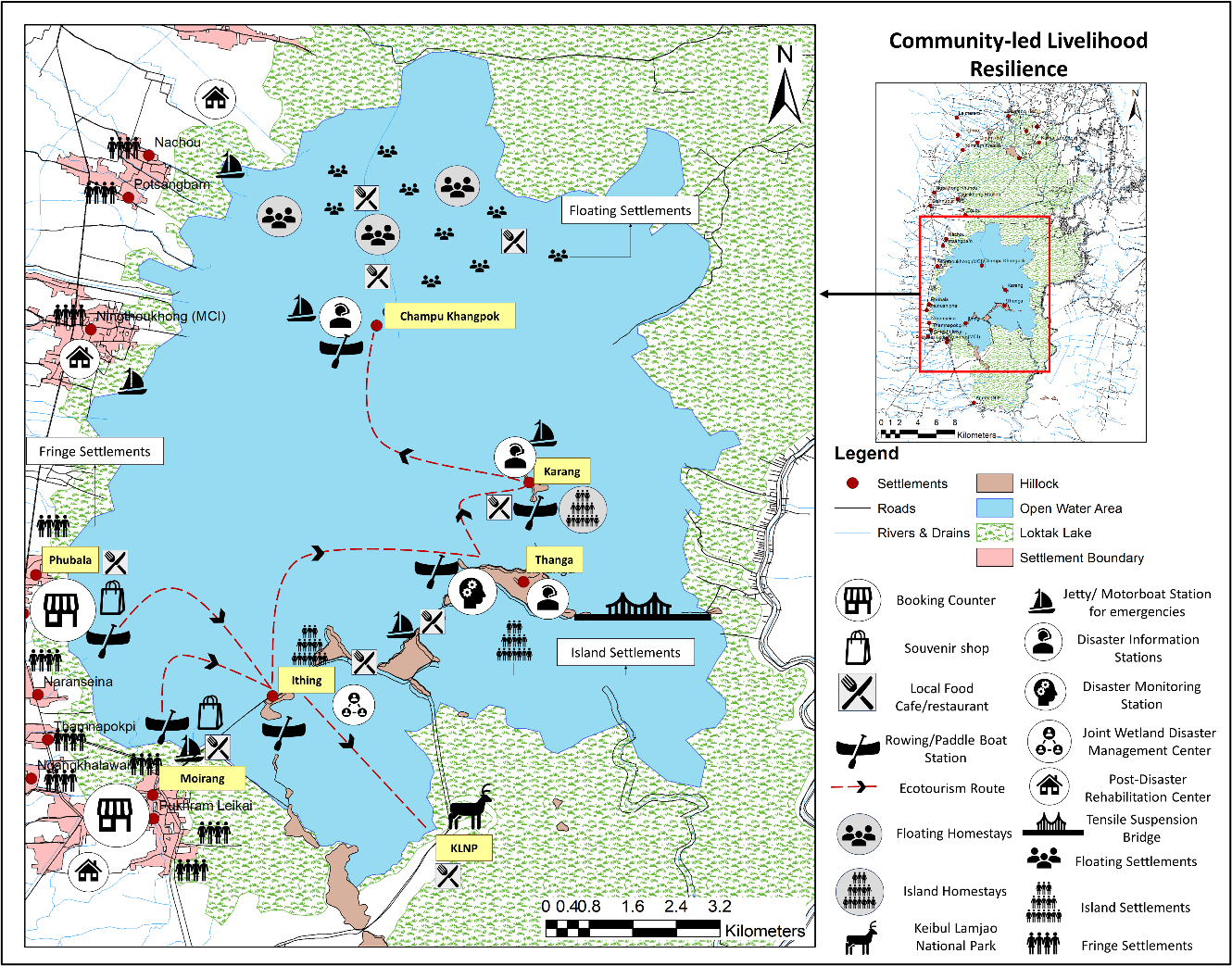
Community-led Ecotourism and Livelihood Resilience - Mapping (Source: Author)
After all, who can better safeguard Loktak's future than those who call it home?
Community-led approaches are key to ensuring the sustainable management of fragile wetland ecosystems. The people of Loktak have been the custodians of this unique environment for generations and their involvement is crucial for any wetland conservation effort to succeed.
Community-led Ecosystem-based Resilient Planning Framework for Fragile Socio-ecological Systems of Wetlands (Source: Author)
Looking to the Future
The Loktak Wetland will serve as a model for Community-Ecosystem coexistence worldwide. As we move forward, long-term monitoring, adaptive management, and continued community engagement will be crucial for the success of this initiative.
By prioritizing both ecological conservation and fulfilling community needs, we can ensure a sustainable future for Loktak Wetland and the associated communities who consider it as their home. This Integrated approach will protect the unique ecosystem and also preserve a way of life, demonstrating that human development and nature conservation can go hand in hand.
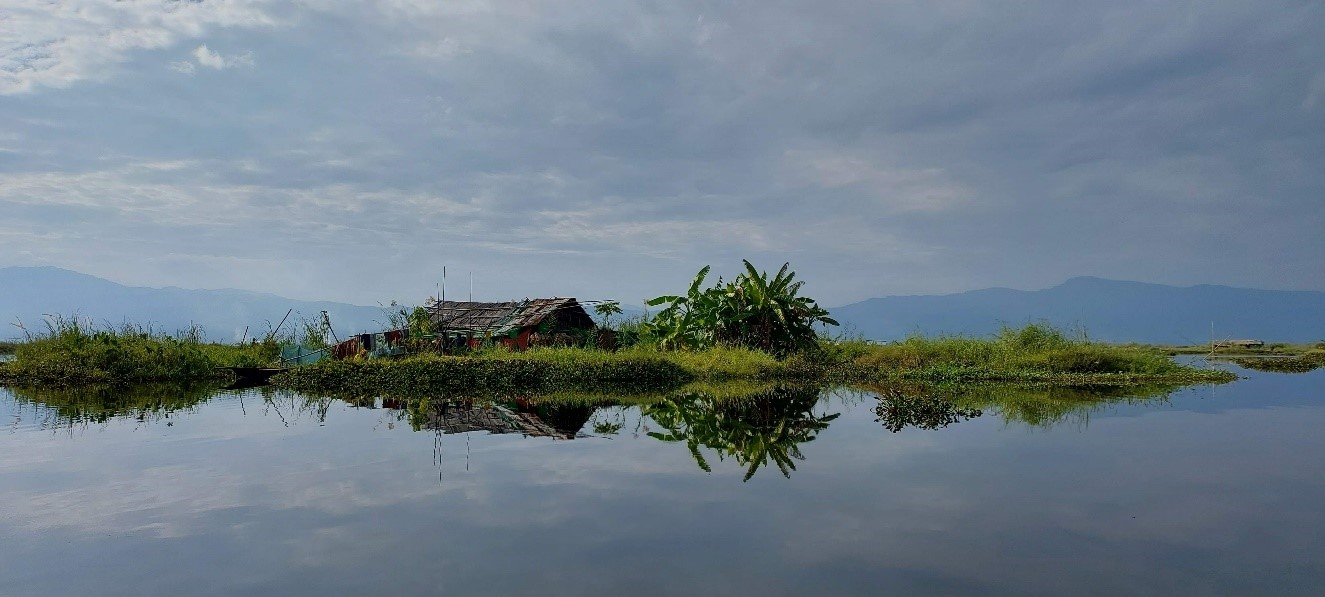
A glimpse into the unique ecosystem of Loktak Wetland (Source: Author)
As we continue to face global environmental challenges, the lessons from Loktak offer hope and a roadmap for sustainable coexistence between humans and nature. It reminds us that when communities are empowered and involved, conservation efforts are not just more effective, but also more enduring.
References:
- Loktak Lake | Ramsar Sites Information Service. (n.d.). https://rsis.ramsar.org/ris/463
- Malekmohammadi, B. J. (2017). Vulnerability assessment of wetland landscape ecosystem services using driver-pressure-state-impact-response (DPSIR) model. Ecological Indicators, 293-303.
- Lladmin. (2024, February) Loktak Development Authority. Loktak Development Authority. https://www.loktaklake.org/
- Report of the Expert Committee - Long Term Perspective Plan (LTPP) for Loktak lake and its associated wetlands (2023). Loktak Development Authority.
- Guidance Note on Using Climate and Disaster Risk Management to Help Build Resilient Societies. (2020). https://unsdg.un.org/sites/default/files/2020-08/Integrating-DRR-CCA-in-CFs-web.pdf
- United Nations Environment Programme. (2020). Guidelines on Stakeholder Engagement for Nature-based Solutions. UNEP, Nairobi.
- Adshead, D., Thacker, S., Fuldauer, L., Gall, S., Chow, N., Pant, R., Russell, T., Bajpai, A., Morgan, G., Bhikhoo, N., Boroto, D., & Palmer, R. (2022). Ghana: Roadmap for Resilient Infrastructure in a Changing Climate. In Ministry of Environment, Science, Technology & Innovation, Accra, Ghana.
By: Dr Surabhi Mehrotra (Maulana Azad National Institute of Technology Bhopal, India) and Dr. Ksh Lal Bihari Singha (Manipur University, India), CDRI Fellows 2023-24
The views and opinions expressed in this blog are those of the authors and do not necessarily reflect those of the Coalition for Disaster Resilient Infrastructure (CDRI).




